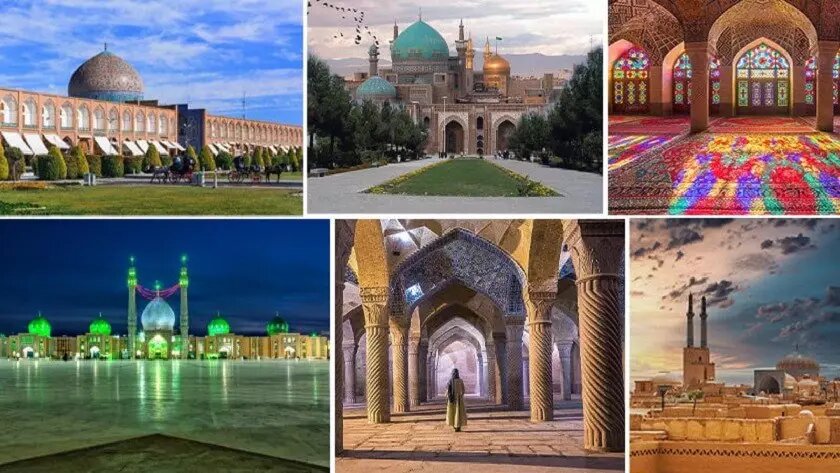Iran considers 34 mosques for potential UNESCO World Heritage label

TEHRAN – Iran has taken a significant step towards the potential registration of its historical mosques as a collective property on the UNESCO World Heritage list.
So far, a primary selection of 34 mosques from 12 different provinces has been made to undergo extensive research and a field survey to prepare a comprehensive dossier for submission, ISNA reported on Saturday.
Abdolrasul Vatandoust, the project manager overseeing the UNESCO World Heritage nomination of “Iranian Mosques,” announced the commencement of this enormous project, describing it as one of the most important cultural heritage initiatives in Iran in the last 50 years.
Speaking to ISNA, Vatandoust, who has previously represented Iran in the successful registration of the “Hegmataneh” and “The Persian Caravanserai” sites, explained that preliminary studies for the dossier have begun. However, the more critical and time-consuming fieldwork is yet to commence, which will require significant funding and cooperation from provincial units and other relevant organizations.
He added that the selected structures represent the architectural evolution of mosque design in Iran, spanning from the early Islamic period to contemporary times.
Vatandoust noted that the current list of 34 mosques might change over the course of the next one to two years, with some mosques potentially being added or removed as the research progresses. “The key objective is to ensure that these mosques are thoroughly documented and studied in time for submission.”
Commissioned by the Ministry of Cultural Heritage, Tourism, and Handicraft, the project aims to complete the dossier by the end of this year, with the hope of submitting it to UNESCO in the following year. However, Vatandoust emphasized that the success of this timeline is heavily dependent on securing the necessary funds, particularly for tasks such as documentation, laser scanning, aerial photography, and field research.
Elsewhere in his remarks, the expert addressed whether mosques already on the World Heritage list, such as the Jameh Mosque of Isfahan, would be included in this new nomination. He confirmed that the “Iranian Mosques” dossier is envisioned as a chain of interconnected sites, and excluding any of these already registered mosques would compromise the integrity of the entire proposal.
“The dossier aims to showcase the architectural development of mosques in Iran from the Islamic era to the present day,” he underlined.
To date, Iran has successfully registered 28 properties on the UNESCO World Heritage list, with the most recent being Hegmataneh, added on August 6, 2024. It is anticipated that Iran will propose “Falak-ol-Aflak Castle and the Khorramabad Valley” for registration at the next UNESCO session, while several other dossiers, including those for “Iranian Mosques,” “Iranian Windcatchers,” “Iranian Houses,” and the “Cultural Landscape of Masuleh,” are currently in development.
Stunning domes and minarets, integral to the country’s mosques, can be seen in nearly every city and village. These architectural elements have become iconic, with some mosques recognized as timeless masterpieces of Islamic architecture.
Architecturally, Iranian mosques display a rich diversity influenced by regional variations in geometry, materials, and style. These mosques often feature complex structures adorned with colorful tiles and symbolic patterns, reflecting the unique architectural traditions of each area.
Among Iran’s most beautiful and must-visit mosques are the Nasir al-Mulk Mosque in Shiraz, the Sheikh Lotfollah Mosque in Isfahan, the Shah Cheragh Mosque in Shiraz, the Imam Mosque in Isfahan, the Jameh Mosque of Yazd, the Blue Mosque in Tabriz, the Goharshad Mosque in Mashhad, the Vakil Mosque in Shiraz, and the Agha Bozorg Mosque in Kashan.
A mosque, known locally as “masjed” or “masjid” (meaning “a place of prostration” to God), is a central place of worship in Islam. In Iran, mosque architecture is characterized by symmetry, intricate geometric designs, and vibrant colors.
AM
Leave a Comment